Ammar Basheir’s diverse design projects showcase his love of fine craftsmanship and visual surprises. With one finger sheathed in his signature thimble of gold, surprises and visual trickery characterize much of his work, which is both impressive in scale and substance, yet retains its subtlety and delicate quality.
The Bahraini designer explains, “If you build a dream, build it well.” His Creative Studio in Manama is responsible for actualizing design dreamscapes across the globe, while empowering the work of artisans that have contributed to his hotel projects and royal palaces. Ammar has designed interiors for more than 120 private houses, retail spaces, and restaurants, as well as creating public installations all over the world. Alongside an intense portfolio of interiors for regional royal families.
Despite his insistence on quality, many of the installations Ammar designs are large in scale and have a short life span. They are meant to be striking showpieces that leave nothing behind. Ammar explains, “Everything is made to last and to engage all your senses, but I enjoy projects with a short momentum. I like to create a beautiful environment but I get a rush out of destroying it. Little fantasies seem to have more impact than long-term things—you were either there or you were not.”
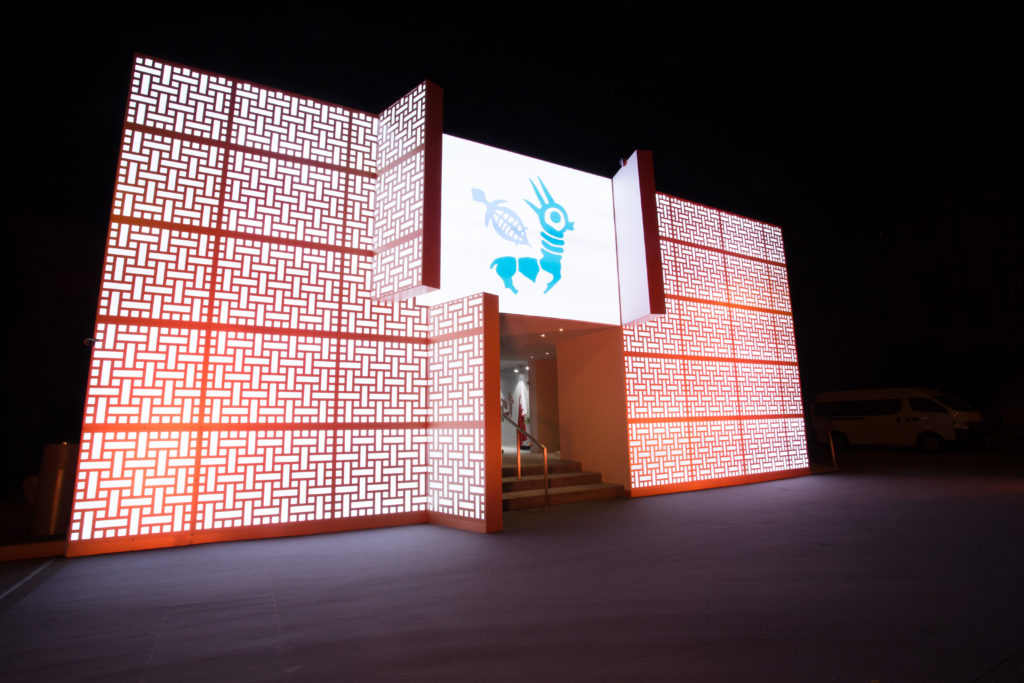
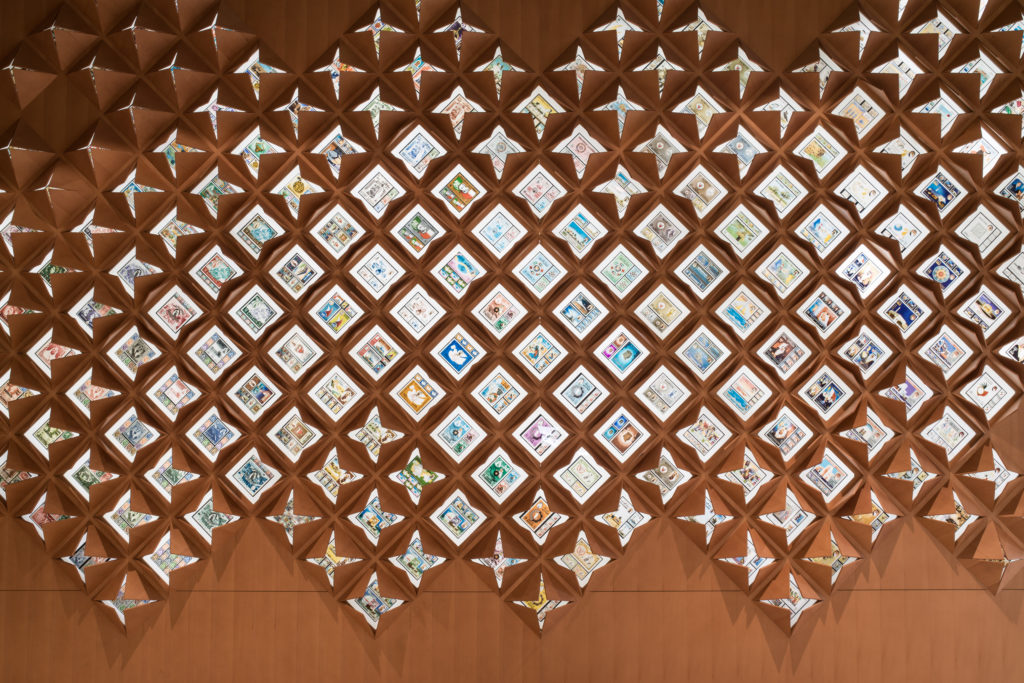
Among his latest projects, Ammar created the Unesco Village, a pop-up conference hall structured to host the Unesco’s World Heritage Committee Meeting—a 12,000 sqm bespoke structure built entirely over 45 days only. For the interiors of On Motcomb, a couture fashion boutique in London, he designed baroque-style panelling made from sponge to create a feeling of intimacy within the shop. For George and Amal Clooney’s wedding in London, he created a white tent supported by slim trunks rising into clouds of jewelled canopies, like something out of a dream-fantasy. For the Plums restaurant in Manama, he lined the walls with sponge to absorb noise, giving the visitor an atmospheric peace of mind. For the Post Office Museum in Manama, where he laid out exquisite bentwood panelling that is reminiscent of a postal staple, the unfolding envelope.
From architectural wedding sets to stylish boutique hotels, he is a designer who relishes in artistic variety—a stylistic impression he calls “eclectic glamour.”
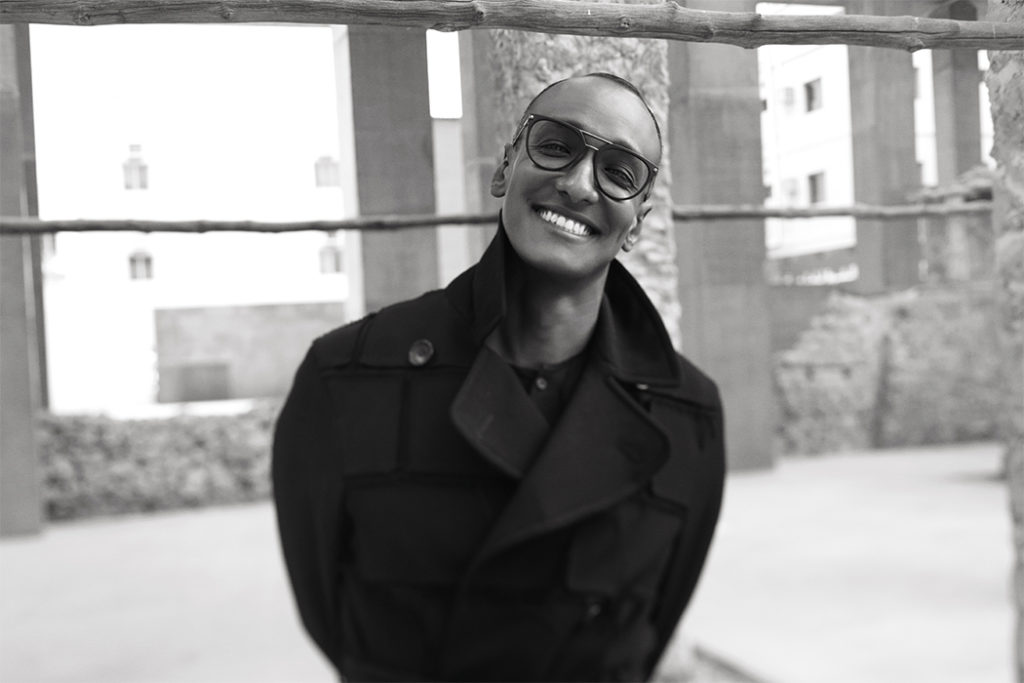
Malak Al-Suwaihel: Ammar, let’s start with your education—why design?
Ammar Basheir: Design wasn’t my original choice of career and was actually a compromise between my family and myself. I had always wanted to study fashion and I was lucky enough to meet Mr. Luciano Benetton, who convinced me to pursue a career in fashion design. However, back in the nineties this wasn’t what parents usually opted to send their children to study and mine were concerned at whether I would be able to make a living out of fashion design. After listening to their worries, we went for the next best option, space design, secretly knowing deep inside my heart that my love for fashion would always shine through my projects.
- MS: Follow-up: You have previously made the remark that, “design is in your genes.” Can you elaborate on such a precise and delineative statement?
AB: I was captivated by the great artistic skills of my mother. During my early years of childhood, she always kept my playroom within her studio space and I would sit beside her observing a wonderful world of artistry and absorbing all her creative energy. One day when I was 6, she was very much surprised to find a finished silk painting that she was working on, completed by myself with my own color combination. Rather than scold me, she praised the work that I had done and this encouraged me to follow further in my own creative talents that she naturally had within her.
MS: Talk to us about your brand. I understand you’ve veered away from the traditional template or format of starting-up a business, which implies initiating yourself on online platforms (an official website and social media platforms) to target a wider audience. What does it mean to have launched a successful, multi-million-dollar business off of word of mouth alone?
AB: I have been very lucky to be surrounded and supported by so many inspirational and visionary individuals throughout my career. From being raised by my devoted parents to being mentored by H.E. Sheikha Mai Al Khalifa, Minister of Culture in Bahrain, they all encouraged me, guided me and inspired me to believe in the impossible, turning dreams into reality and making it an everyday routine. I have been blessed to meet some wonderful people and through constant networking and my contacts I felt no need for PR, a website, or even a business card. They made the work speak for itself and it certainly paid off with more projects.
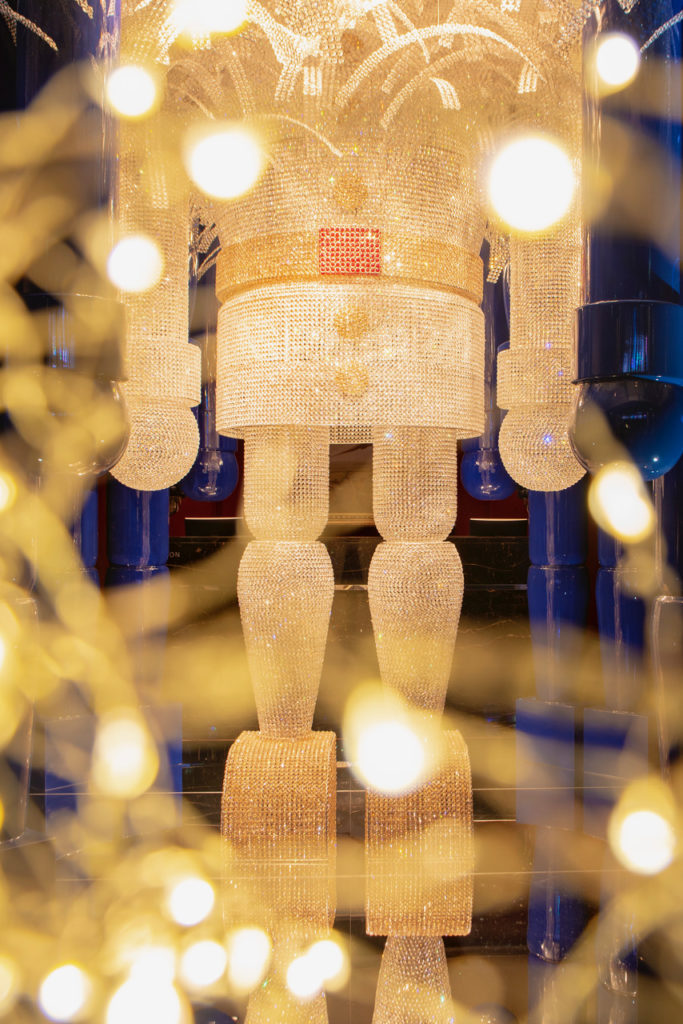
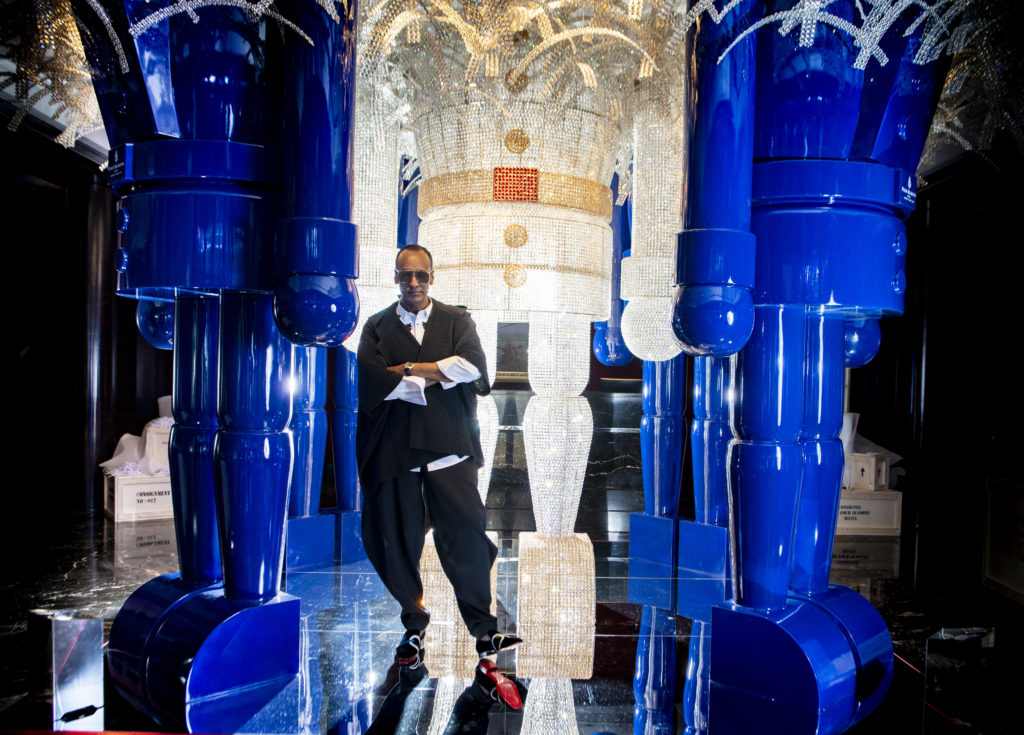
MS: Talk to us about your method—from what inspires your work, to your drawing board, the materials you choose to work with, and to the final design/project.
AB: My design process involves one simple method; I walk into a space and I envision it, that’s it. It’s a feeling more than a developed sketch and it also very much relates to the character of who I am working for. In the past, I used to instill my own personality into my designs, but now I’m ensuring that my design reflects my client’s personality with just a touch of my own.
MS: Can you talk to us more about your installations and art pieces? How do projects like these come into fruition?
AB: I firmly believe in the empowerment of artisans, workers, and craftspeople. Exceptional workmanship and hand crafted artistry is still something that I highly appreciate, and I always ensure to support these often overlooked artists, wherever possible, to have their skills and creativity reflected in my work. An example of this would be when I did the Four Seasons London Park Lane Christmas installation. The Four Seasons wanted a fabulous, larger than life installation and so I looked to an artisan village in India who were masters of crystal weaving and producing glass beads but whose industry had unfortunately died and was out of business. Through this project, we were able to sustain their business for an entire year, bought them new machines, and brought happiness and joy to a whole community of thousands of people. Designed in Bahrain, produced in India, and installed in London, this installation genuinely reflected the concept that design has a universal language.
MS: You have an impressive portfolio of work, achievements, and a clientele base of relevant and revered individuals and organizations. Anything you can share exclusively with the Khaleejesque readership?
AB: I was lucky enough to spend a day with Andrea Boccelli, and learned a great deal from him about connecting with my inner being. After chatting with him for hours, he touched a scarf that I was wearing and started describing the colors in it (he is blind). I was blown away by how precise he was and when I asked him how did he did it his answer was, “I don’t look at the fabric, I listen to it.” Ever since then I began looking at all my designs from a different perspective. I listened to them.
- MS: Follow-Up: What’s the experiential difference between working on public projects with the Bahraini Ministry of Culture and say, a private client?
AB: Working for public projects and private clients is vastly different. You have to communicate to the public in a language they understand, keeping in mind any cultural sensitivities as well as the current climate of what’s happening around the world. The wider public is more critical and often judgmental, however such criticisms should be seen as constructive and an opportunity to be more perceptive of the public opinion. I believe design is very subjective, and it’s expected that some might not like what I do, but regardless, as long as it evokes emotion, it means it has worked.
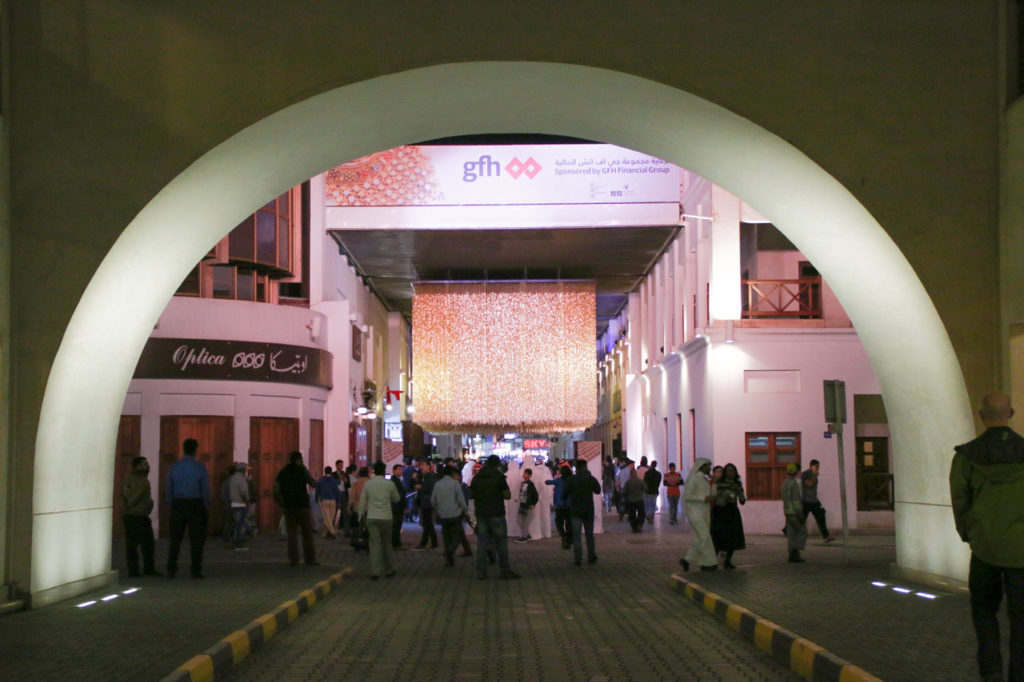
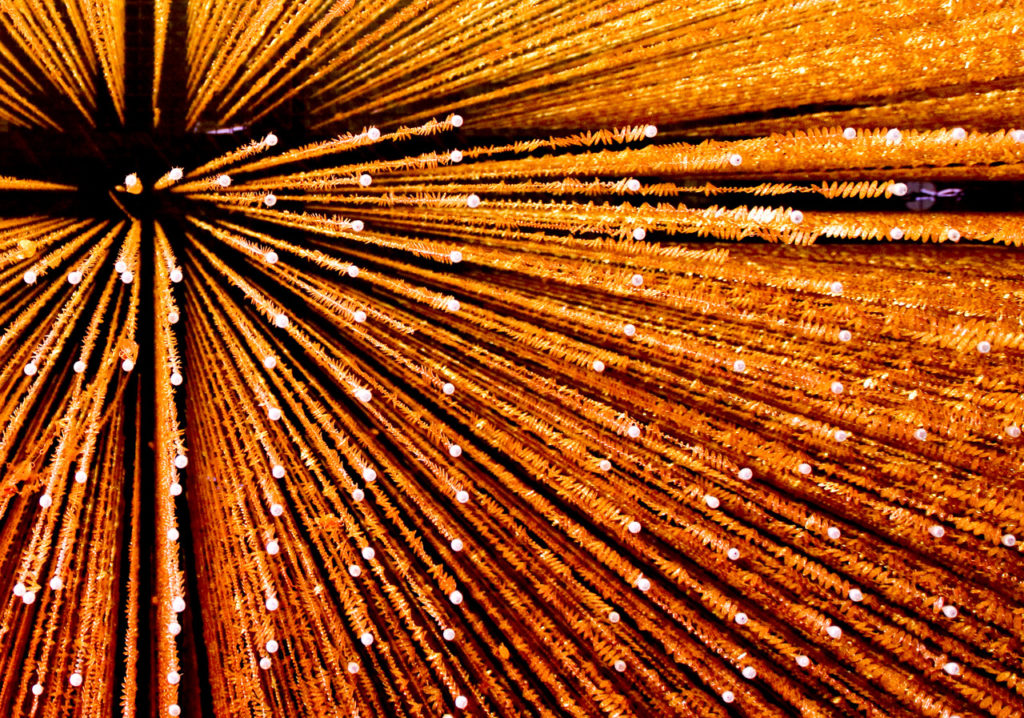
MS: Please elaborate on a past statement you’ve made: “Interior design is linked to social behavior.” How so, and why?
AB: Interior design is indeed linked to social behavior, it is parallel to how we feel within a space and it forms some sort of discipline to how we act and react. We react with our emotions to any space, be it a colorful playroom, an opulent mosque or even a classroom, it automatically dictates our behavior. The only difference is nowadays our social behavior has a bigger influence on interiors not the other way around. We have witnessed for a period of time a big take on industrial interiors, concrete walls and recycled materials. Such interiors are created based on the need for more relaxed and chilled spaces that we can easily blend into, rather than being intimidated by them.
MS: Can you give us more insight on Bahrain’s burgeoning art scene, as well as those regionally across the GCC, and those more established on the global market?
AB: The Bahrain design and art scene has grown rapidly over the last two decades, and has attracted big names in the world of design and architecture. Current cultural projects in Bahrain from the likes of Tado Ando and Valerio Olgiati have positioned this little island as a hub and leading example of combining culture and design, making it more accessible to the public in an attempt to reassure the importance of design within our environment. The younger generation in Bahrain and the GCC are choosing design as their educational route, which proves a big shift in the appreciation of this industry. Art fairs that happen in Abu Dhabi, Dubai, and Jeddah, have certainly shown how we have progressed as an artistic region.
MS: Fill in the blank: In the future I’d like to work with _______________.
AB: Kuwaiti designers and architects.
A version of this article was featured in Khaleejesque’s Tenth Anniversary, March 2019 issue.
Words: Malak Al-Suwaihel
Images: Giovanni Squatriti, VYU Studios, Loredana Mantello, Ahmed Al Ghasra







